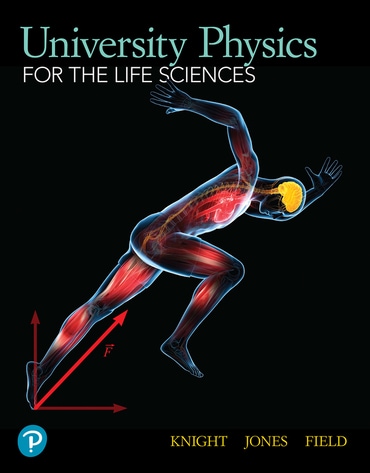Dr. Roger Freedman shares how the comic book format can be used to teach physics problem-solving. Discover how you can use this unique teaching style to engage students and improve comprehension.
Physics
Engage and prepare students for success

Mastering Physics
Mastering® Physics helps students master key concepts, build problem-solving skills and improve results.

Pearson+
Empower students to choose how they learn best with easy-to-use eTextbooks and study tools, available in Pearson+.

Pearson+ Channels
Help students get exam ready with thousands of concept videos and practice problems tailored to their course.




Explore titles for physics
Join Dr.’s Catherine Crouch and Brian Jones to explore adapting physics courses to better meet the needs of life science students, leading to enhanced physics understanding and appreciation.
-
The Role of Culture and Diversity in Learning and Teaching Educational Psychology
Who are you as a person and an educator? How have the various facets of your cultural and social identities shaped your own experiences and views? Who are your students? How will their cultural backgrounds affect their learning, development, and motivation in your class?
These are vital questions in today’s classroom—a truth that Ellen Usher and I were reminded of while writing the 15th edition of Educational Psychology. Specifically, several educational psychology instructors at Michigan State University told us that the cluster in our book on cultural and diversity came too late for today’s realities. These instructors believed that a discussion of the many aspects of identity should be front and center, informing the study of all topics in educational psychology. So, Ellen wrote our new Cluster 2, “Who Are You? Who Are Your Students? Culture and Diversity.”
Grounded in the fact that we all are shaped by many forces and factors, Cluster 2 provides insight about why we must understand and appreciate our students’ identities, as well as our own. Throughout the cluster, we offer research and resources to help you and your students explore your identities and the role of culture and diversity in learning and teaching. In the overview, we explain that:
-
The top 7 Mastering features you should be using
Upon mastering a course, it’s etched in our minds along with much satisfaction and pride. That’s what happens for faculty and students alike using Pearson’s Mastering® platform. It supports active, engaging, and immersive experiences while lightening the teacher’s workload.
You will see its interactive tutorials, real-time analytics, and tailored feedback become indispensable tools as you help prepare students for their academic journeys.
We’ve rounded up seven of Mastering’s best features that are sure to help the way you teach, engage, and ensure your students success.
7 Mastering features you can start leveraging today —
Dynamic Study Modules pose a series of question sets about a course topic that adapt to each student’s performance and offer personalized, targeted feedback to help them master key concepts. They can use their computer or the MyLab and Mastering app to access Dynamic Study Modules. Available for select titles.
Early Alerts help identify struggling students as early as possible — even if their assignment scores are not a cause for concern. With this insight, you can provide informed feedback and support at the very moment students need it, so they can stay — and succeed — in your course.
Gradebook records all scores for automatically graded assignments. Struggling students and challenging assignments are highlighted in red, giving you an at-a-glance view of potential hurdles students may face throughout your course.
Performance Analytics track student performance against specified learning outcomes at both the individual student and class level. Mastering problems are tagged to publisher-provided learning outcomes or added to course-specific, department-wide, or institution-wide learning outcomes.
Learning Catalytics allows you to pose a variety of questions to help students recall ideas, apply concepts, and develop critical-thinking skills. Students can respond using their smartphones, tablets, or laptops.
Pearson+ Channels feature an interactive hub of expert-curated short videos and practice materials providing best-in-class content for any student seeking more knowledge in a specific topic or subtopic. In addition to testing their knowledge with practice questions created by Pearson experts, users can visit the social community and discuss certain topics in message threads, ask for help with practice problems, and rank the videos and practice materials.
Scheduled Reading assigns a chapter or specific section to hold students accountable for their reading and help them prep for lectures, homework, and quizzes. Scheduled Readings populate to each student’s assignment page, and you can now link readings directly to Mastering assignments.
With real-time insights from Mastering’s analytics dashboard, you can personalize your lectures and labs, keeping pace with student life today while helping to boost student performance.
By putting more Mastering tools to work, you can help develop more confident, competent learners eager to embrace complex scientific challenges through mindful, meaningful ways and help them improve results.






